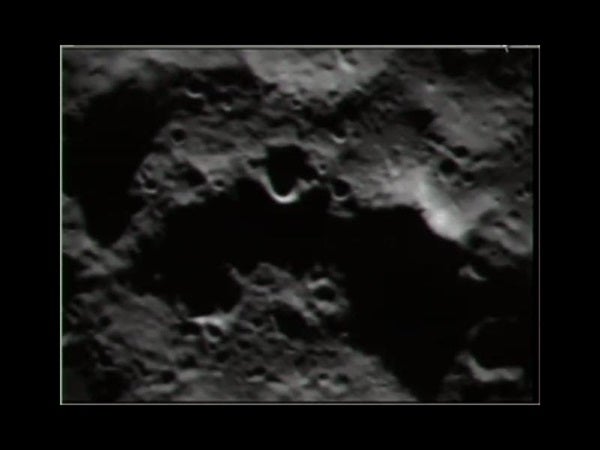NASA’s Lunar CRater Observation and Sensing Satellite (LCROSS) impacted the Moon’s crater Cabeus, near the south pole, early Friday morning to determine if the permanently shadowed crater might be hiding water ice.
At 7:31 A.M. EDT, the Centaur upper stage rocket slammed into the Moon at some 5,600 mph (9,000 km/h), excavating a new hole in the crater. About 5 minutes later, the LCROSS itself smashed into the Moon, after flying through an expected cloud of debris kicked up by the first impact.
But apparently no earthbound viewers witnessed this debris plume, which NASA had estimated would be visible to observers with 12-inch or larger telescopes. The images LCROSS broadcast also failed to show the plume, even though visible light is just one of the many types of data the satellite collected.
At a subsequent press conference, NASA officials downplayed the unseen debris plume, instead celebrating the high-quality data LCROSS did capture and looking forward to its analysis.
“Science is science,” said Tony Colaprete, LCROSS project scientist and principal investigator. “I don’t think you necessarily lose any information with regards to understanding what is there.” He also reminded reporters that NASA’s visual data is of a higher fidelity than the broadcast, so further inspection might reveal a visual plume after all.
Colaprete was most pleased with the high-quality spectroscopic data LCROSS captured. “That’s what really matters,” he said. This data provided the only other scientific surprise, besides the unseen debris plume: an unexpected “flash” of sodium at the impact site. That means something excited sodium atoms on the Moon, he said, which no one expected. “We were looking for just about everything,” Colaprete said. “There’s a lot more in [these results] than just the water.”
Since NASA hadn’t yet studied most of the data, Colaprete and his colleagues were unable to answer many of the questions. NASA hopes to announce more concrete findings within the next 2 months – including whether the crater contained water ice, the primary purpose of the mission – and reiterated the mission’s success. “This is NASA at its very best,” said Mike Wargo, NASA’s chief lunar scientist.
“There’s an awful lot of work that still needs to be done,” Wargo continued. “This isn’t the end; this is the beginning.”
Visit Astronomy.com’s Lunar Reconnaissance Orbiter (LRO) mission page for complete coverage.












